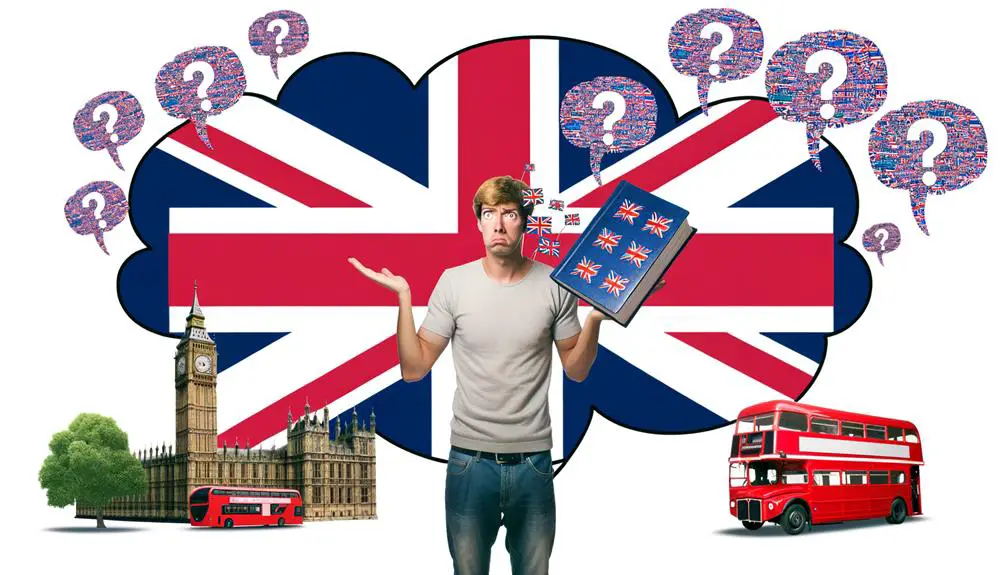In British slang, 'bloody' isn't just any old curse word, it's an enhancer that packs a punch. It's evolved from possible Anglo-Saxon origins into a staple of the English language, reflecting cultural attitudes towards expression with gusto. You'll often hear it peppering sentences to emphasize emotion or opinion, showcasing its versatility. Despite historical controversies, particularly due to religious connotations, its shift from taboo to accepted enhancer mirrors changing societal values. Whether you're in London or Leeds, its usage and intensity might vary, but its importance in conveying heightened feelings doesn't. Beyond enhancing your linguistic repertoire, understanding 'bloody' opens a window into British culture and linguistic evolution.
Key Takeaways
- 'Bloody' is a British slang term used as an intensifier to express strong emotions.
- Originally considered profane, its usage has become broadly accepted in modern British English.
- It reflects cultural attitudes towards vivid expression, enhancing the intensity of statements.
- Despite its historical controversies, 'bloody' showcases the evolving nature of linguistic acceptability.
- The term is versatile, appearing in various contexts from casual conversations to media, highlighting its embeddedness in British culture.
The Origins of "Bloody"
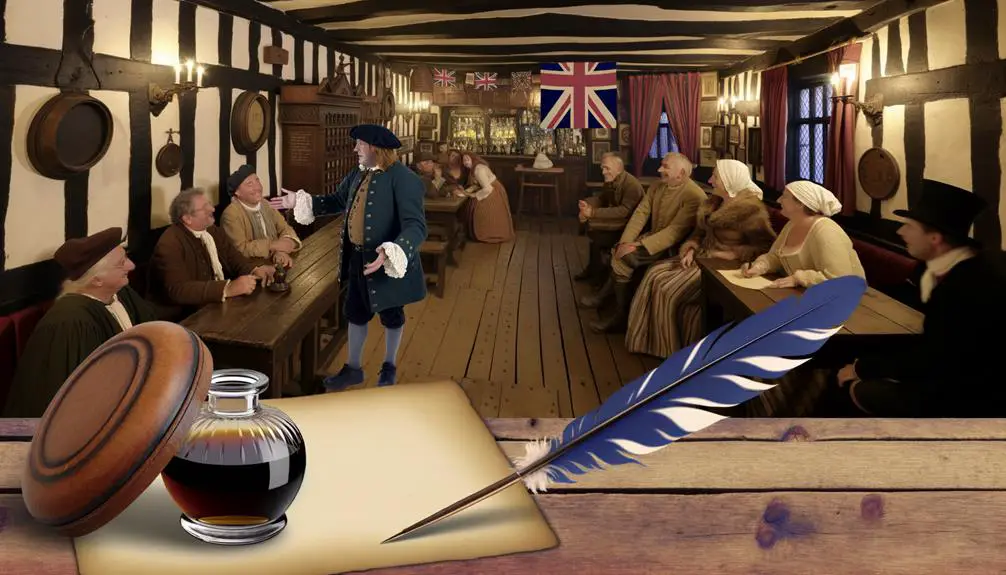
Tracing the origins of 'bloody' reveals its complex and multifaceted history in the English language, offering insights into how it's evolved from a term of intensity to a quintessential piece of British slang. The etymology debates surrounding 'bloody' are as varied as they are intriguing, pointing to a rich tapestry of linguistic roots. Initially, you might assume it's directly tied to the word 'blood,' suggesting a literal or violent connotation. However, the journey from its literal meaning to its current slang usage underscores a dynamic shift in language over centuries.
Diving deeper, some scholars argue that 'bloody' has Anglo-Saxon origins, potentially deriving from the Old English 'blodig,' which is itself from 'blod,' meaning blood. This connection seems straightforward, yet it doesn't fully explain how 'bloody' evolved from describing something covered in blood to its modern, figurative use. Other theories propose that 'bloody' might have been influenced by religious oaths, hinting at a blasphemous past where it was considered a profanity rather than mere slang. This blend of potential linguistic roots, from the visceral to the sacred, showcases the word's ability to adapt and survive in the ever-changing landscape of English vernacular.
Bloody as an Intensifier
Exploring the evolution of 'bloody' reveals its significant role as an intensifier in modern British English, showcasing its importance as an indicator of how language adapts to meet the expressive needs of its users. This adaptation of 'bloody' allows speakers to convey a broader range of emotional expressions, from frustration to awe, without altering the fundamental structure of the sentence. It's fascinating how a single word can amplify the meaning of an entire statement, underscoring the speaker's intent with precision.
The application of 'bloody' as an intensifier is a demonstration of the dynamic nature of language, highlighting how terms evolve to meet the expressive needs of their users. This evolution reflects not just a change in vocabulary but a deeper shift in cultural attitudes towards more direct and vivid forms of expression. By injecting 'bloody' into a phrase, the speaker engages in a form of linguistic efficiency, conveying heightened emotional states with conciseness and clarity.
This nuanced role of 'bloody' illustrates the intricate ways in which language adapts to the demands of emotional expression, offering speakers a versatile tool for enhancing their communication. The power of 'bloody' to intensify a message without altering its basic meaning is a compelling example of the richness and adaptability of English, particularly within the British lexicon.
Historical Controversies
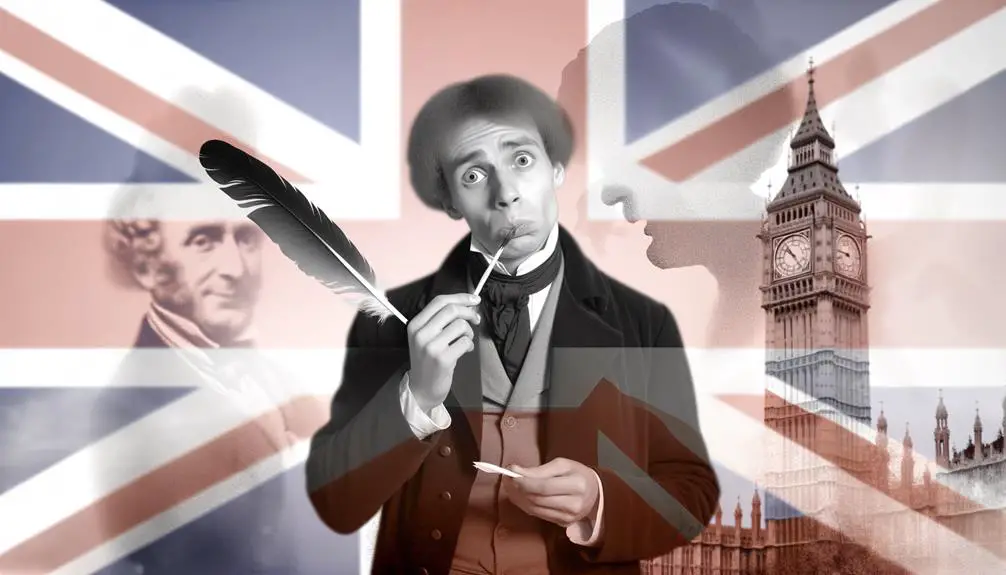
While the role of 'bloody' as an intensifier showcases its adaptability and expressiveness in modern English, its history is not without its controversies, revealing a complex journey through cultural acceptance and linguistic taboos. Initially, the term's religious implications stirred significant unrest, as many believed it to be a blasphemous change of 'By Our Lady', referring directly to the Virgin Mary. This interpretation led to widespread social and, eventually, legal restrictions aimed at curtailing its use.
Authorities, concerned with maintaining moral and religious decorum, imposed penalties on those who used 'bloody' in public discourse, embedding a sense of impropriety around the word that lingered for centuries. This legal intervention highlights the power of language to both reflect and influence societal values and norms.
Moreover, the controversy surrounding 'bloody' underscores the tension between evolving linguistic practices and the inertia of established cultural mores. As 'bloody' shifted from a term fraught with religious and legal implications to a more broadly accepted intensifier, it exemplified the dynamic nature of language, constantly shaped by and shaping the contours of societal acceptability and taboo.
Bloody in Modern Usage
Today, 'bloody' has morphed into a versatile intensifier within British English, shedding much of its historical baggage to become a marker of emphasis or strong emotion. You'll find its usage frequency is both widespread and varied, seamlessly fitting into numerous contexts to amplify the sentiment behind the words. It's a demonstration of the dynamic nature of language, how 'bloody' can shift from being considered profane to an accepted part of everyday speech, underlining the emotional expression it's meant to convey.
To understand its modern usage better, consider the following table, which illustrates the emotional weight 'bloody' can add to a statement:
| Context | Emotion Conveyed |
|---|---|
| 'That was a bloody good show!' | Enthusiasm / Approval |
| 'I've had a bloody awful day.' | Frustration / Disappointment |
| 'You're bloody brilliant, aren't you?' | Admiration / Sarcasm |
| 'It's bloody cold outside!' | Exasperation / Surprise |
| 'I can't believe he's bloody done it.' | Shock / Admiration |
This table not only showcases the range of emotions 'bloody' can express but also underscores its adaptability. Whether it's amplifying joy, conveying irritation, or highlighting disbelief, 'bloody' serves as a powerful linguistic tool, allowing speakers to express themselves more vividly and precisely.
Regional Variations
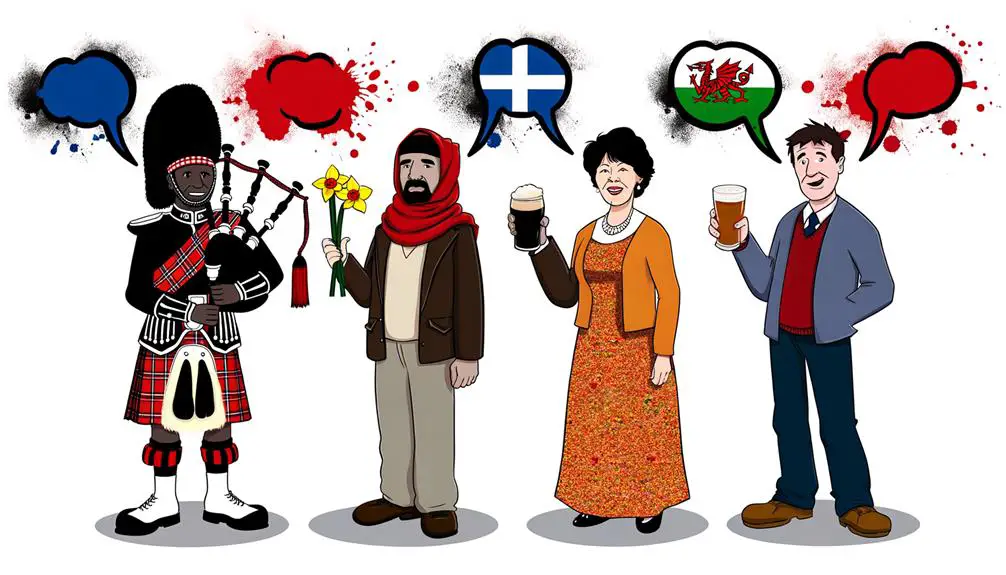
The usage of 'bloody' exhibits notable regional variations across the UK, each adding a unique nuance to its expression. In certain areas, it's imbued with strong dialectal endorsements, where the word's intensity can escalate or diminish based on local customs and attitudes. You'll find that in some regions, 'bloody' carries a heavier, more emphatic weight, used liberally in everyday conversation as a marker of emphasis or frustration. Meanwhile, in other locales, its presence is more subdued, reflecting perhaps a societal reticence towards overt expletives.
Pronunciation differences also play a critical role in these regional variations. The elongation of vowels, the softening of consonants, or the brisk clip of speech patterns can alter 'bloody's' impact significantly. For instance, a drawn-out pronunciation in one dialect might give the word a lingering, potent effect, while in another dialect, a quicker delivery might render it almost innocuous. Such nuances underscore the linguistic flexibility of 'bloody', demonstrating how its reception is as much about the sounds shaping it as the context in which it's used. This adaptability makes 'bloody' a fascinating study of language's intersection with culture, geography, and individual identity within the British Isles.
Bloody in Popular Culture
Frequently, you'll notice that 'bloody' has permeated popular culture, becoming a staple in various forms of media that reflect and shape societal attitudes towards this quintessentially British expletive. Its use spans across literature, cinema, and even into the names of cocktails, like the infamous Bloody Mary, whose origins are as murky and debated as the history of the word 'bloody' itself. In cinema, particularly, the evolution of film title trends showcases how this term has been embraced, signaling a certain Britishness or adding a punch of shock value to attract global audiences.
To paint a picture for the audience, consider the following table that highlights 'bloody' in popular culture:
| Aspect | Example | Impact |
|---|---|---|
| Literature | "Bloody Chamber" | Reinforces Gothic themes with a British twist. |
| Cinema | "Bloody Sunday" | Uses historical context to evoke emotional responses. |
| Television | "Bloody Hell" catchphrase | Embeds British slang in international viewers' lexicon. |
| Cocktails | Bloody Mary | Mingles culinary arts with linguistic history. |
| Film Title Trends | "My Bloody Valentine" | Demonstrates the term's flexibility and appeal in titles. |
This table illustrates how 'bloody' has not just persisted but thrived in popular culture, adapting to and reflecting evolving societal norms and interests.
Comparisons With Other Expletives
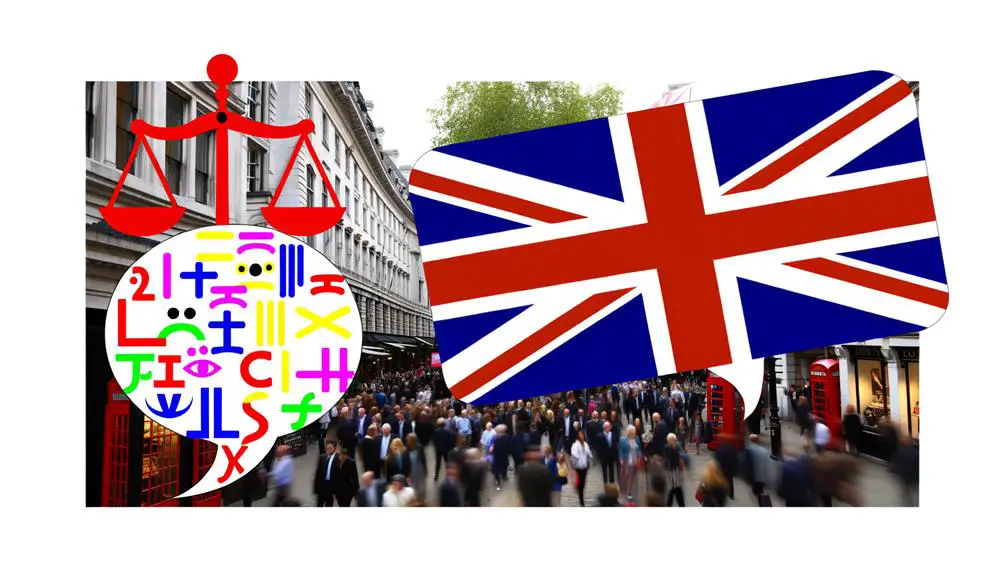
You'll find that 'bloody' occupies a unique position when you compare it to other expletives, particularly with regards to severity and cultural acceptance. Its impact on politeness can vary greatly, depending on the context and the audience's sensitivity to language. This variation highlights the complex interplay between language, culture, and societal norms.
Severity in Language
British slang's use of 'bloody' as an expletive is less severe when compared to other profanities, offering a nuanced insight into the language's expressive range. This distinction showcases the importance of language precision in conveying just the right degree of verbal aggression without overstepping social boundaries. Unlike harsher swear words that might shock or offend, 'bloody' strikes a balance, allowing speakers to express frustration or emphasis without the risk of severe backlash. It's a confirmation of the adaptability and versatility of English, where the impact of words can be finely tuned. This careful modulation of language demonstrates a sophisticated understanding of how verbal cues can shape interactions, highlighting the strategic use of 'bloody' as a tool for nuanced expression rather than outright offense.
Cultural Acceptance Variations
Understanding the nuanced use of 'bloody' within British slang illuminates how its cultural acceptance varies greatly when compared to other expletives. Unlike harsher swear words, 'bloody' often skirts the edge of acceptability, finding its way into conversations without the legal implications or societal backlash that more severe language attracts. In educational settings, for instance, its use might raise eyebrows but typically doesn't result in the disciplinary actions that other swear words might provoke. This disparity highlights a complex tolerance within British culture, where the historical weight and evolution of 'bloody' have rendered it less offensive. Its reception, hence, is a reflection of the fluid nature of linguistic acceptability, contrasting starkly with the rigid boundaries that govern the use of other expletives.
Impact on Politeness
When evaluating the impact of 'bloody' on levels of politeness, it's important to compare it with other expletives to understand its relatively mild effect on conversation. In the domain of British slang, 'bloody' occupies a unique position where it straddles the line between informal speech and formal etiquette. Unlike harsher expletives, which might be considered outright offensive or taboo in polite company, 'bloody' can serve as a conversation starter, signaling a relaxed atmosphere without crossing the boundary into rudeness. This nuanced role allows it to be used in a wider range of social situations, from casual gatherings to more formal settings where a slight breach of strict etiquette can inject warmth and personality into the dialogue.
Social Acceptance and Taboos
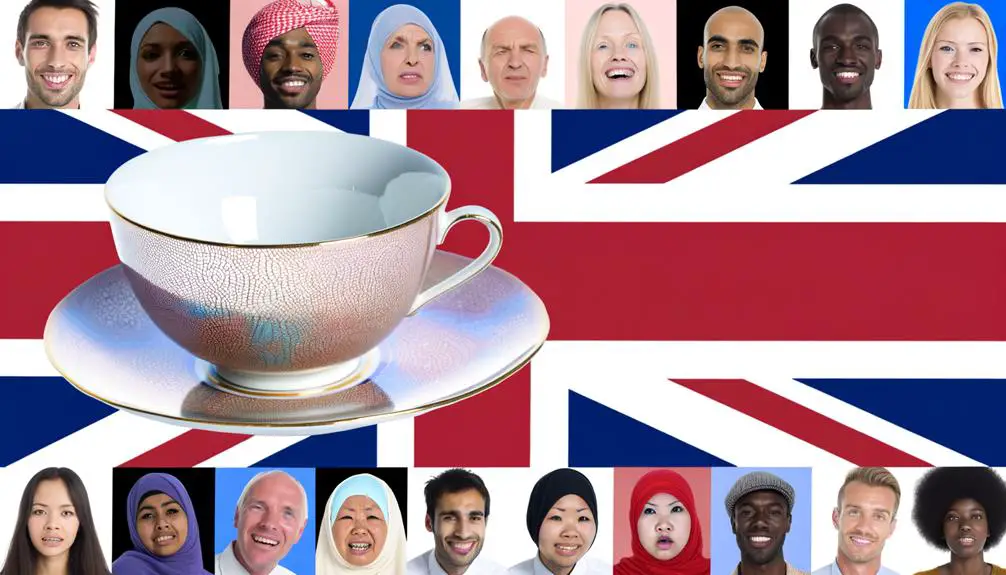
You'll find that public reactions to 'bloody' vary widely, influenced heavily by social contexts and the speaker's age. Age-related usage norms dictate what's acceptable, with younger generations often pushing boundaries more than their elders. Additionally, media's evolving portrayal of 'bloody' plays a critical role in shaping its social acceptance and the taboos surrounding its use.
Public Reaction Variability
The public's reaction to the term 'bloody' varies substantially, reflecting deep-seated cultural nuances and societal taboos. While some Britons use it effortlessly in daily conversation, others find it offensive, highlighting a divide influenced by factors like age, region, and social class. This variability in acceptance creates notable tourist confusion, as visitors often struggle to gauge the appropriateness of its usage in different contexts. Similarly, marketing professionals face challenges when incorporating this slang into campaigns, wary of alienating segments of their audience. The term's flexibility and potency mean that its reception is unpredictable, demanding a nuanced understanding of British culture to navigate its complexities without stepping into social faux pas territory.
Age-Related Usage Norms
Understanding that age plays a pivotal role, it's clear that the acceptability of 'bloody' within British discourse varies markedly across different generations, reflecting deeper societal norms and taboos. The generation gap notably influences perceptions; older generations often view 'bloody' as more offensive or inappropriate, a relic of their stricter, more conservative upbringing. In contrast, younger people tend to use it with less hesitation, indicative of shifting attitudes towards language and its perceived offensiveness. This divergence isn't merely anecdotal; educational influence plays a critical role. Schools and contemporary pedagogy emphasize context and intention behind words, teaching younger Brits to navigate the nuances of language with a more liberal approach. Consequently, 'bloody' finds itself in a peculiar position, straddling the line between taboo and acceptability, contingent largely upon the age of the speaker and listener.
Media Influence Dynamics
Reflecting on age-related usage norms, it's evident that media plays a significant role in shaping social acceptance and the evolving taboos around the word 'bloody.' Digital globalization has accelerated the slang evolution, making 'bloody' more palatable worldwide.
| Era | Media Impact | Slang Evolution |
|---|---|---|
| 20th Century | Limited exposure | Slow change |
| Early 2000s | Increased global TV | Moderate change |
| 2010s | Internet explosion | Rapid evolution |
| Present | Social media reign | Global acceptance |
| Future | AI integration | Unknown dynamic |
This table illustrates the dynamic relationship between media influence and the acceptance of 'bloody' in public discourse. As you navigate through digital eras, you're witnessing a linguistic transformation, where once-taboo words gain new life and acceptance through constant media reshaping.
Learning to Use "Bloody" Correctly
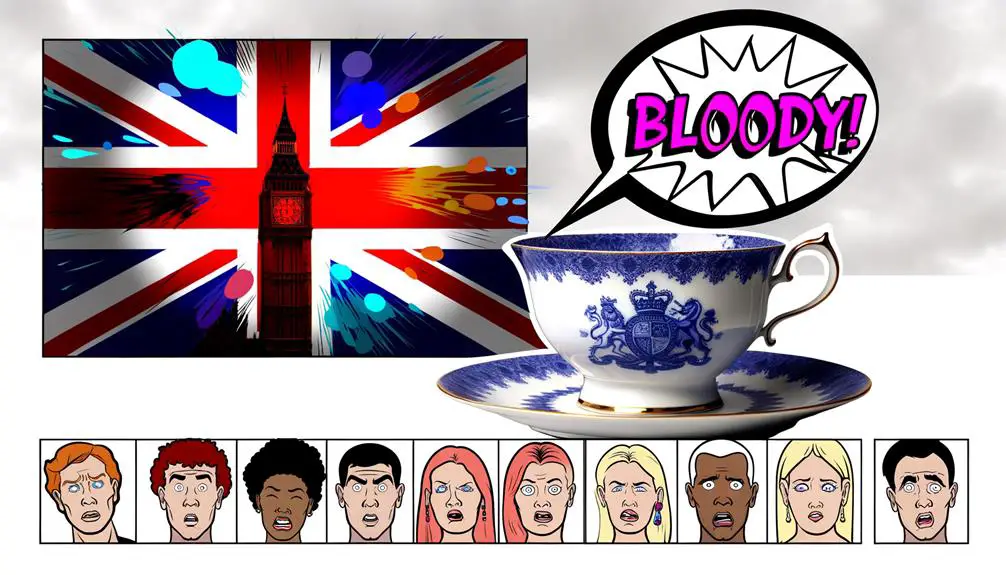
To master the use of 'bloody' in conversation, you'll need to grasp its nuanced meanings and contexts. Understanding the subtleties of this term is vital for its appropriate application and to avoid potential misinterpretation. Pronunciation tips are key for non-natives; the emphasis typically falls on the first syllable, with a short, clipped pronunciation of the 'o' sounds, almost like 'bluh-dy'. It's not just about getting the sound right, but also the intonation, which conveys the speaker's feelings.
One of the most common usage errors involves misunderstanding the term's versatility. 'Bloody' can modify almost anything, acting as an intensifier. However, its application is not universally acceptable. In formal settings or among certain audiences, its use might be considered offensive or too informal. Additionally, overuse dilutes its impact and can make your speech sound careless or unrefined.
It's also essential to recognize the cultural contexts in which 'bloody' is appropriate. While it's a staple of British slang, its reception can vary widely in other English-speaking countries. To use 'bloody' effectively, you'll need to develop a sensitivity to these dynamics, ensuring your language is both expressive and respectful.
The Future of "Bloody" in Slang
As you've seen, 'bloody' has been a staple in British slang, but its future hinges on evolving language usage and the impact of global influence. You'll find that as English continues to adapt globally, 'bloody' may either solidify its place or transform under the weight of diverse linguistic trends. This shift could redefine its usage, challenging you to stay abreast of how global dynamics shape linguistic evolution.
Evolving Language Usage
Language evolves, and the future of 'bloody' in British slang hinges on how current trends influence its use and perception. Understanding language evolution theories and the digital slang expansion provides a framework for anticipating changes. You're witnessing a linguistic transformation, propelled by online communication's rapid pace, which could either cement 'bloody's' place in slang or see it eclipsed by newer expressions.
| Trend | Impact on 'Bloody' | Future Outlook |
|---|---|---|
| Digital Expansion | Increased Usage | Wider Acceptance |
| Generational Shift | Possible Decline | Uncertain |
| Media Influence | Reinforcement | Continued Presence |
Analyzing these trends, it's clear that 'bloody' may adapt but won't disappear. Its resilience and adaptability in the face of changing linguistic landscapes highlight its enduring legacy in British slang.
Global Influence Impact
Understanding the evolving patterns of language, we now consider the role global influence plays in shaping the future of 'bloody' within British slang. Language globalization means that as cultures intermingle, the words we use and how we use them undergo significant transformation. In the case of 'bloody', its journey from a distinctly British expletive to a term recognized and even adopted globally showcases slang adaptation at work. You're witnessing a linguistic phenomenon where the spread of media, the internet, and international travel contribute to the elasticity of slang. This doesn't dilute its British essence but rather enhances its global appeal. As 'bloody' continues to evolve, its survival and relevance hinge on this very adaptability, ensuring it remains a vibrant part of spoken English worldwide.

